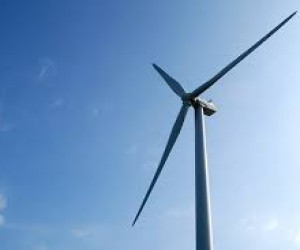A second independent study by the Council for Scientific and Industrial Research (CSIR) found that renewable energy from South Africa's first wind and solar (photovoltaic) projects created R4 billion more financial benefits to the country than they cost during the first six months of 2015.
The study is an update and continuation of an initial study that was published in January this year, which covered the calendar year 2014. The benefits earned were two-fold.
The first benefit, derived from diesel and coal fuel cost savings, is pinned at R3.6 billion. This is because 2.0 TWh (terawatt-hours) of wind and solar energy replaced the electricity that would have otherwise been generated from diesel and coal (1.5 TWh from diesel-fired open-cycled gas turbines and 0.5 TWh from coal power stations).
The second benefit is the saving of R4.6 billion to the economy derived from 203 hours of so-called 'unserved energy' that were avoided thanks to the contribution of the wind and solar projects. During these hours the supply situation was so tight that some customers' energy supply would have had to be curtailed ('unserved') if it had not been for the renewables. The avoidance of unserved energy cumulated into the effect that during 15 days from January to June 2015 load shedding was avoided entirely, delayed, or a higher stage of load shedding prevented thanks to the contribution of the wind and PV projects.
These direct cash savings on fuel spending to Eskom and the macroeconomic benefits of having avoided "unserved energy" are countered by the tariff payments to the independent power producers of the first wind and photovoltaic (PV) projects. They amounted to R4.3 billion from January to June 2015.
Therefore, renewables contributed a total net benefit of R4 billion (or R2 per kWh of renewable energy) to the economy.
As for wind alone, these projects were cash positive for Eskom to the tune of R300 million; saving R1.5 billion in fuel payments while costing only R1.2 billion in tariff payments to IPPs.
Dr Tobias Bischof-Niemz, who heads up the CSIR's Energy Centre, explains: "The study was based on actual hourly production data for the different supply categories of the South African power system (e.g. coal, diesel, wind, PV). We've developed a methodology at the CSIR Energy Centre to determine whether at any given hour of the year, renewables have replaced coal or diesel generators, or whether they have even prevented so-called 'unserved energy'"
This CSIR methodology was fed with cost assumptions from publicly available sources, such as Eskom's 2015 financial results for coal and diesel costs, or the Department of Energy's publications on the average tariffs of the first renewables projects, or the Integrated Resource Plan on the cost of unserved energy.
Because the study is an 'outside-in' analysis of the system operations, conservative assumptions for the system effects and for the costs of coal were chosen. The actual cost savings that renewable energy sources brought during the first six months of 2015 are therefore presumably higher than shown by the study.
"Our study shows that in the first six months of 2015, the trend that started in 2014 continued and speeded up, and that renewable energy provided a huge net financial benefit to the country. Without the solar and wind projects, we would have spent significant additional amounts on diesel, and energy would have had to be 'unserved' during more than 200 additional hours from January to June 2015," Bischof-Niemz says.
"What is more, the cost per kWh of renewable energy for new projects is now close to 80c for solar PV and between 60c - 70c for wind projects. That will keep the net financial benefits of new renewables positive, even in a future with a less constrained power system," he says.











